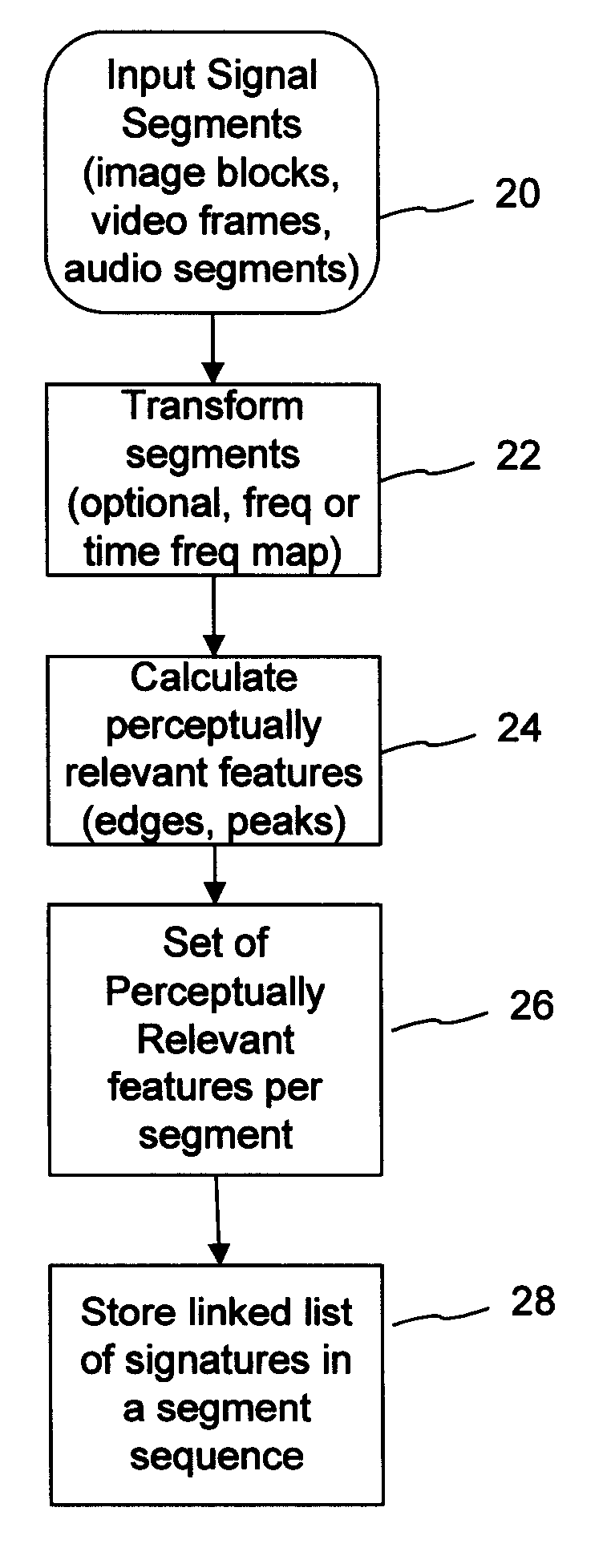Methods, Systems, and Sub-Combinations Useful in Media Identification
a technology of media identification and sub-combination, applied in the field of processing electronic media content, can solve the problems of object corruption, decoding process may not be able to recognize and decode watermarks, etc., and achieve the effect of improving security and verification
- Summary
- Abstract
- Description
- Claims
- Application Information
AI Technical Summary
Benefits of technology
Problems solved by technology
Method used
Image
Examples
example implementation
[0104] FIG. 2 of U.S. Pat. No. 6,408,082 depicts the detection process shown in that patent's FIG. 1 as applied to an image. In the illustrated detector implementation, the target image is divided into blocks of pixels, e.g., 128 by 128 pixel blocks, which form the data sets for the detection process. The detection process operates on these data sets to look for a watermark, and if one is identified, to compute an orientation vector.
[0105] Before elaborating on implementation details, it is helpful to begin with an overview of the watermark structure. As noted above, the watermark may be implemented in a variety of ways. In the context of images, for example, it may be applied to the original content in the spatial domain, in a frequency domain, or some combination of these domains. The specific values of the watermark used to alter discrete samples of the image may be expressed in the spatial or frequency domain. For example, the watermark samples may be expressed as having some v...
PUM
 Login to View More
Login to View More Abstract
Description
Claims
Application Information
 Login to View More
Login to View More - R&D
- Intellectual Property
- Life Sciences
- Materials
- Tech Scout
- Unparalleled Data Quality
- Higher Quality Content
- 60% Fewer Hallucinations
Browse by: Latest US Patents, China's latest patents, Technical Efficacy Thesaurus, Application Domain, Technology Topic, Popular Technical Reports.
© 2025 PatSnap. All rights reserved.Legal|Privacy policy|Modern Slavery Act Transparency Statement|Sitemap|About US| Contact US: help@patsnap.com



